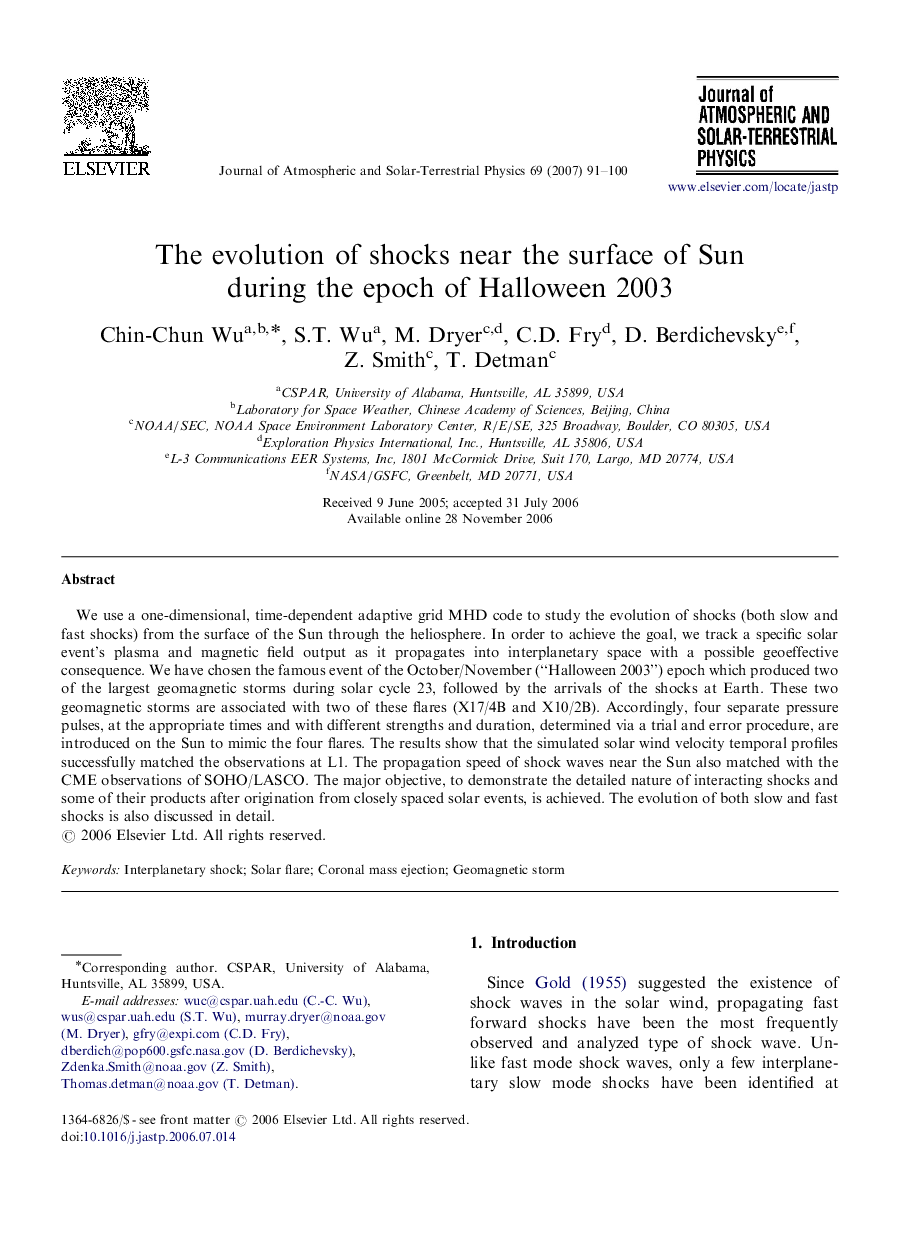| Article ID | Journal | Published Year | Pages | File Type |
|---|---|---|---|---|
| 1778214 | Journal of Atmospheric and Solar-Terrestrial Physics | 2007 | 10 Pages |
We use a one-dimensional, time-dependent adaptive grid MHD code to study the evolution of shocks (both slow and fast shocks) from the surface of the Sun through the heliosphere. In order to achieve the goal, we track a specific solar event's plasma and magnetic field output as it propagates into interplanetary space with a possible geoeffective consequence. We have chosen the famous event of the October/November (“Halloween 2003”) epoch which produced two of the largest geomagnetic storms during solar cycle 23, followed by the arrivals of the shocks at Earth. These two geomagnetic storms are associated with two of these flares (X17/4B and X10/2B). Accordingly, four separate pressure pulses, at the appropriate times and with different strengths and duration, determined via a trial and error procedure, are introduced on the Sun to mimic the four flares. The results show that the simulated solar wind velocity temporal profiles successfully matched the observations at L1. The propagation speed of shock waves near the Sun also matched with the CME observations of SOHO/LASCO. The major objective, to demonstrate the detailed nature of interacting shocks and some of their products after origination from closely spaced solar events, is achieved. The evolution of both slow and fast shocks is also discussed in detail.
